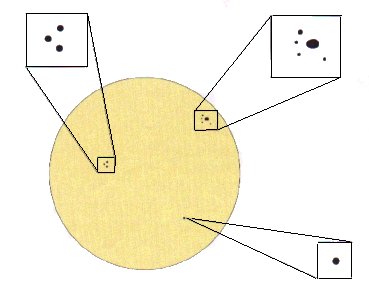sun
SID Database
About the SID Database
The Sudden Ionospheric Disturbance (SID) Database lists all events identified in the AAVSO Solar Bulletin. These results are provided monthly by the worldwide network of SID observers in the AAVSO Solar Division. Individual results are correlated with other observers' reports and reduced to a list of events with high definiteness ratings.
The Gyrator III VLF Receiver
The latest version of the Gyrator series of VLF receivers (first developed in the 1990s) is the Gyrator III, a revision of Arthur Stokes' Gyrator II by Guglielmo Di Filippo (observer A-93).
Circuit diagrams and wiring for the Gyrator III are available here in Microsoft Word and PDF formats: .doc, .pdf
AAVSO Sudden Ionospheric Disturbance Program Observers
Active Observers (Data submitted within the last year)
| OBS ID | Observer Name | Station Location |
| A-96 | Roberto Battaiola | Milan, Italy |
| A-97 | Jon Wallace | Torrington, CT, USA |
| A-118 | Lionel Loudet | Muret, France |
| A-119 | Jean-Pierre Godet | le Vauroux, France |
| A-120 | Bob Terrill | Ballarat, Vi |
SID Monitoring Group FAQ
When the ultraviolet rays from the Sun hit the Earths atmosphere the energy they possess work to knock electrons off of the atoms and molecules that the atmosphere is made up of. These free electrons make up a region of the atmosphere known as the Ionosphere. The region is strongest on the daytime side of the earth since it is dependant on the energy from the solar ultra violet rays.
VLF Station List
VERY LOW FREQUENCY (VLF) RADIO STATIONS
Station Station Frequency Radiated
Site ID (kHz) Power
(kW)
U.S.Solar Program, Reducing Data and Email Format
Solar Program, Reducing Data and Email Format
Reducing Data Gathered by VLF Monitoring Systems
(Extracted from SID Technical Bulletin Vol. 3, Number 4, Oct. 1992)
The Zurich Classification System of Sunspot Groups
The Zurich Classification System of Sunspot Groups
Contributed by Tom Fleming (FLET)
"A" Type: One or more tiny spots that do not demonstrate bi-polarity or exhibit penumbra.

"B" Type: Two or more tiny spots that demonstrate bi-polarity but do not exhibit penumbra.

Dances with Wolfs: A Short History of Sunspot Indices
Contributed by Carl E. Feehrer (FEEC)
Revised August 2000


